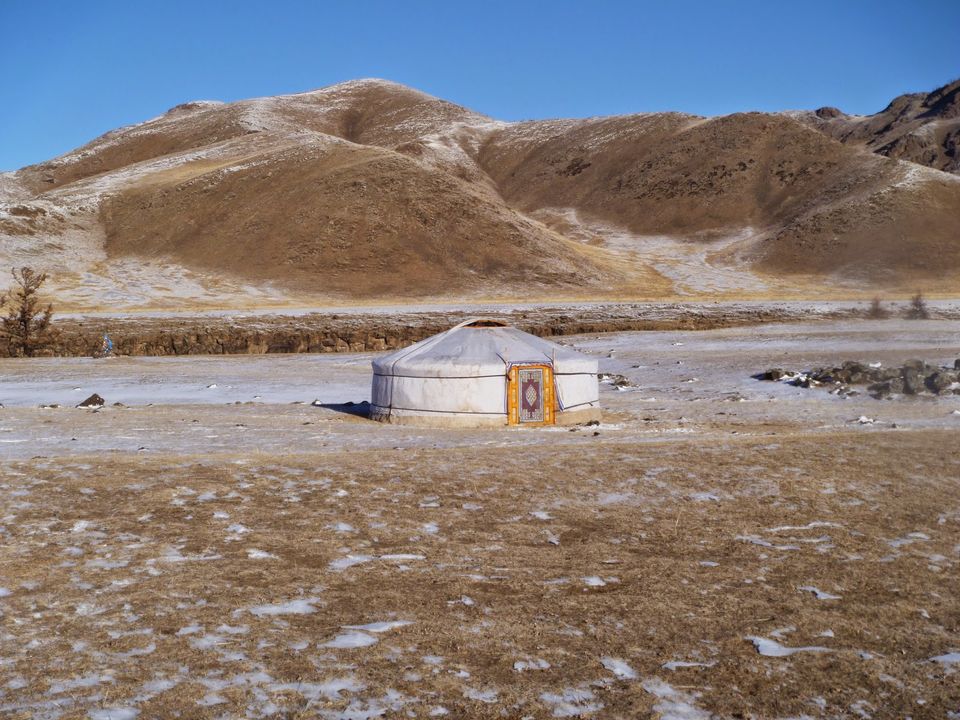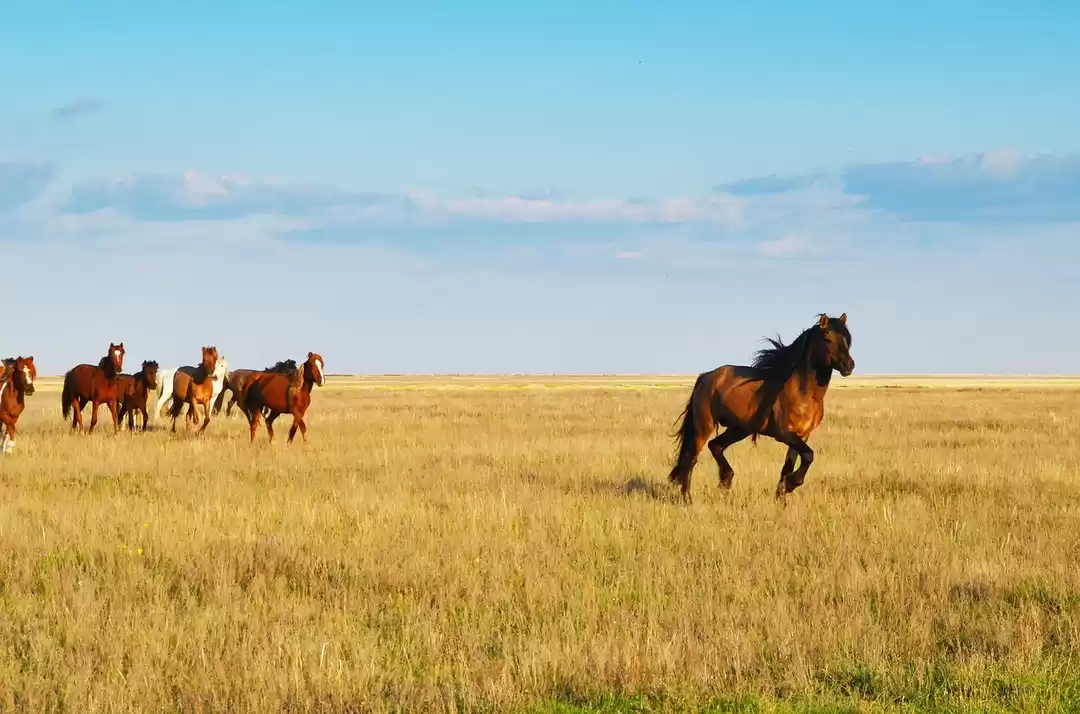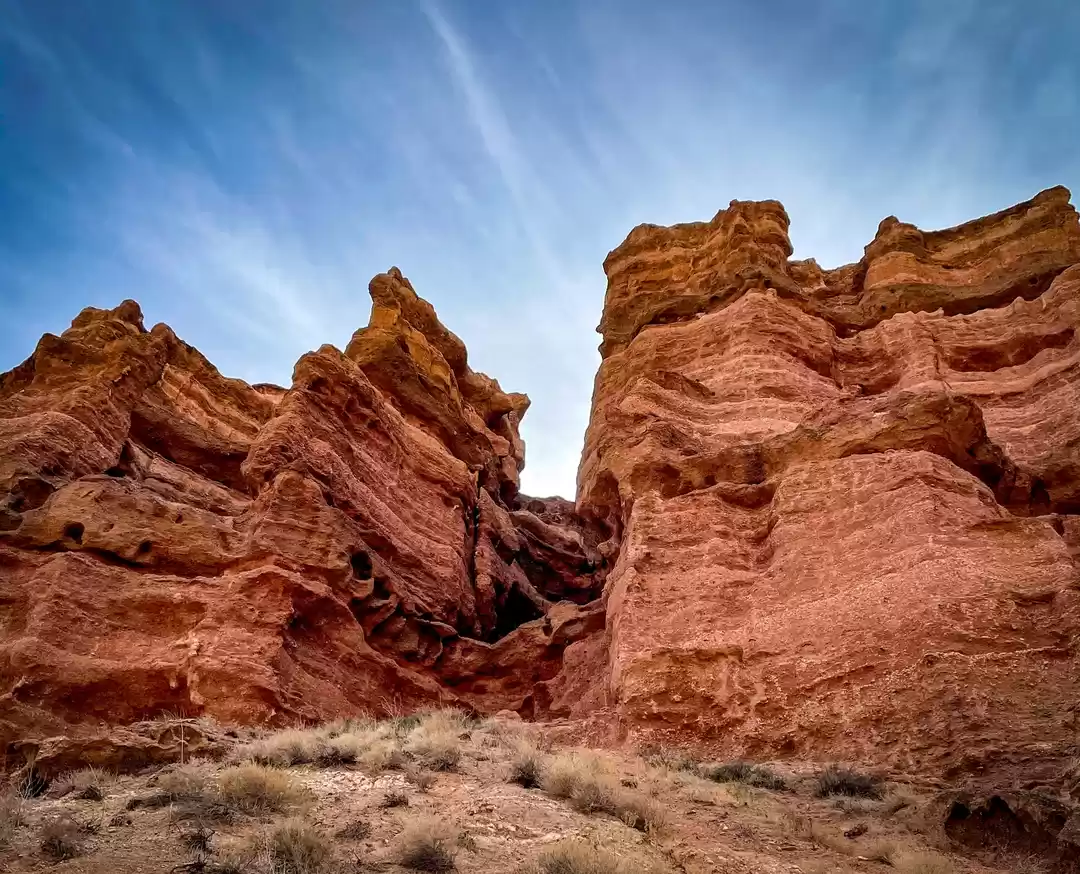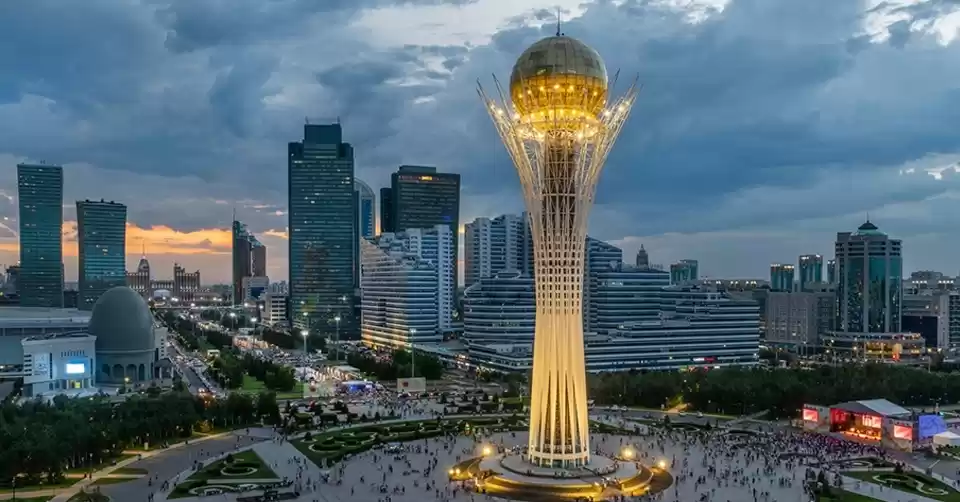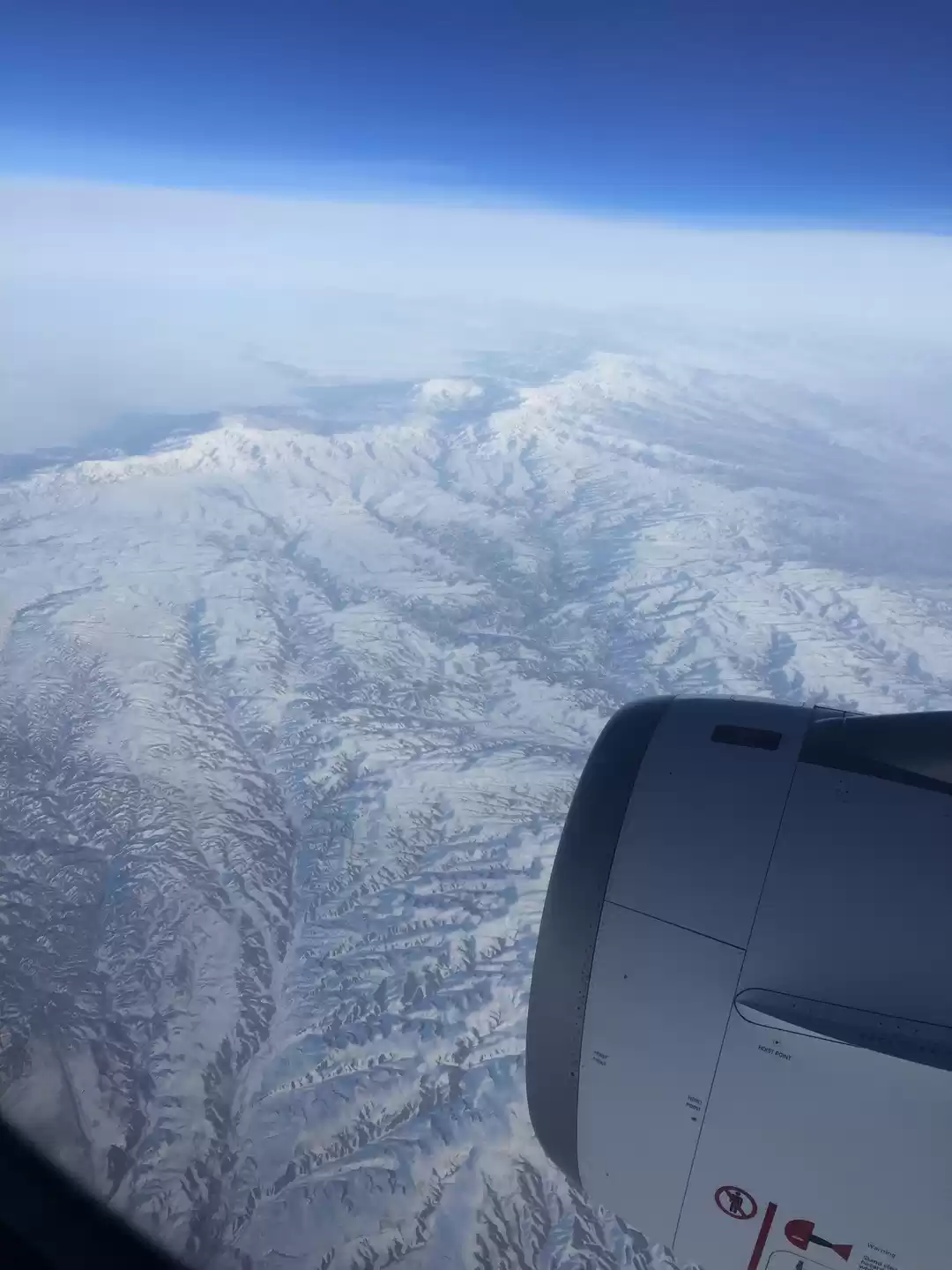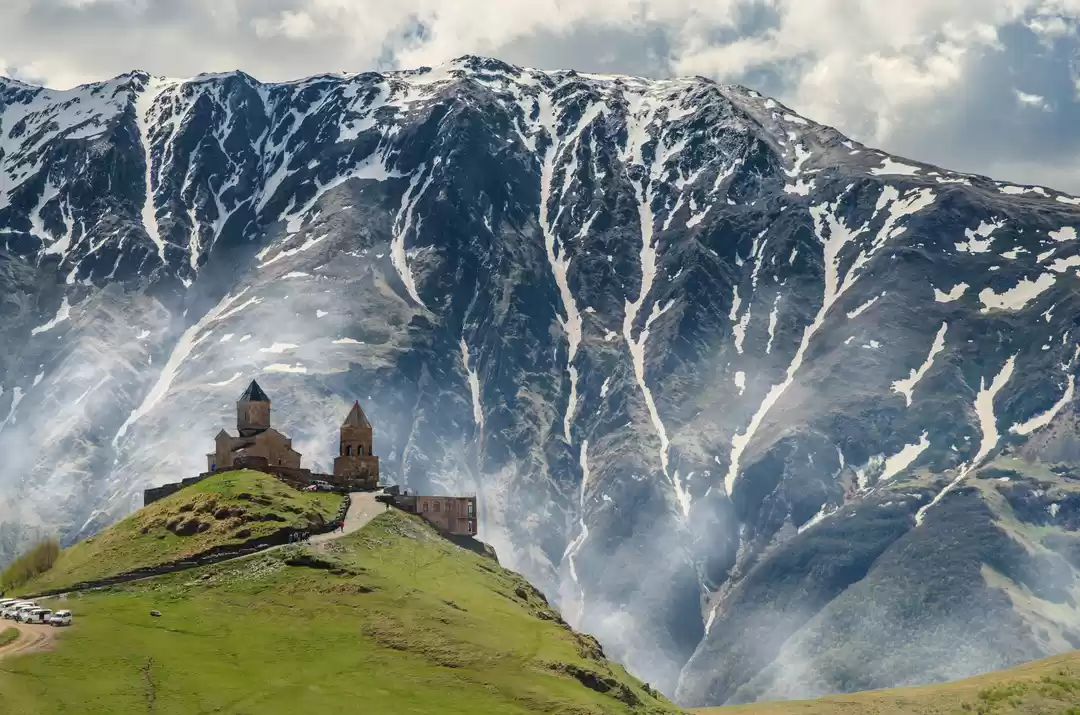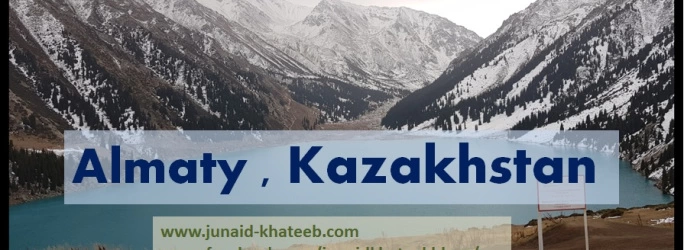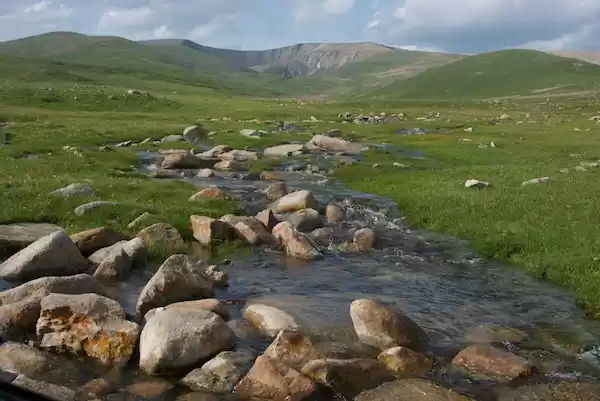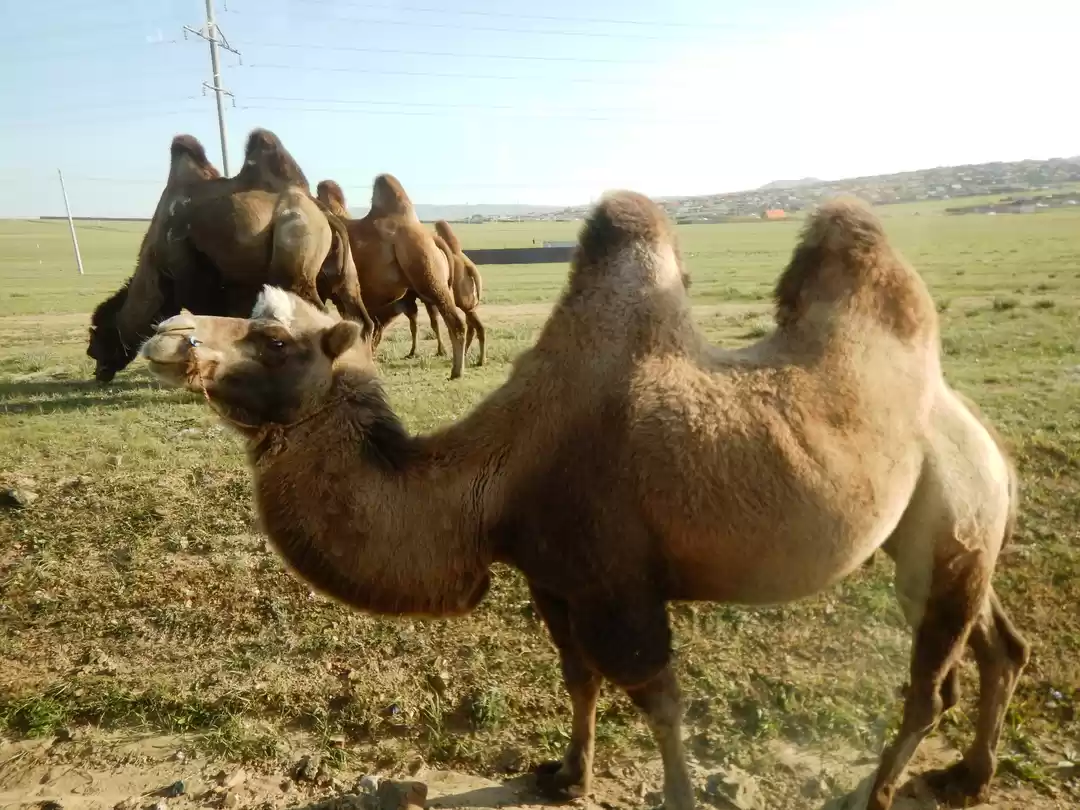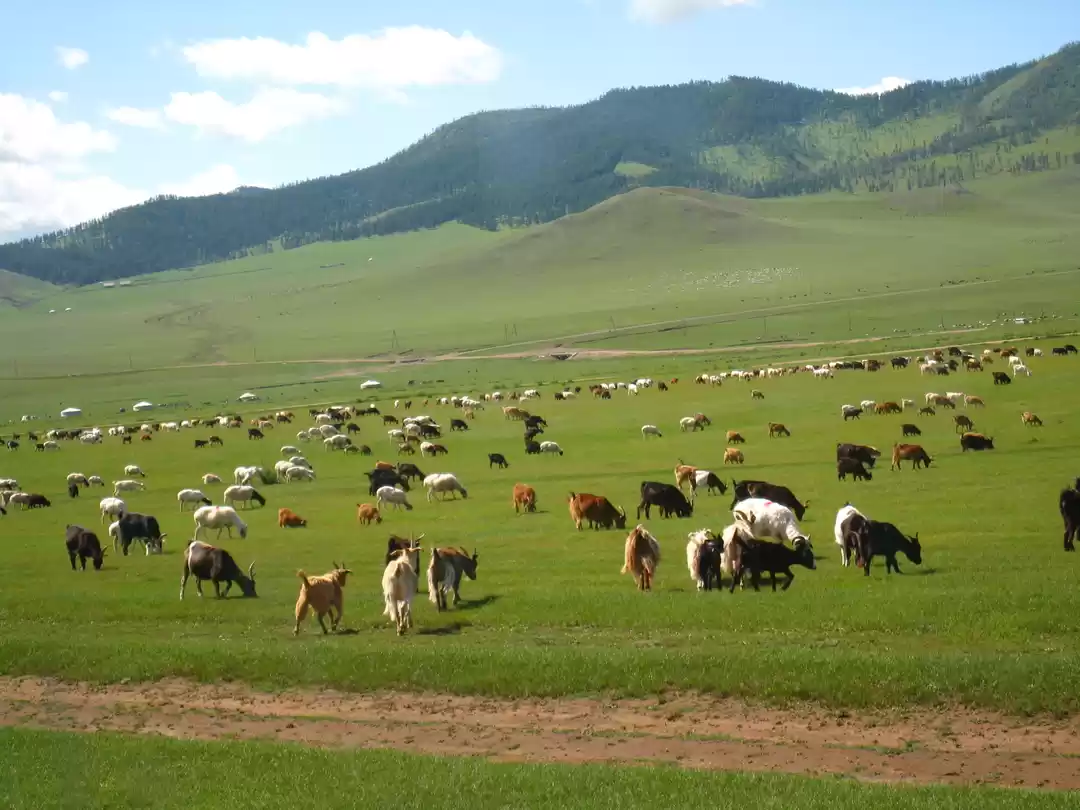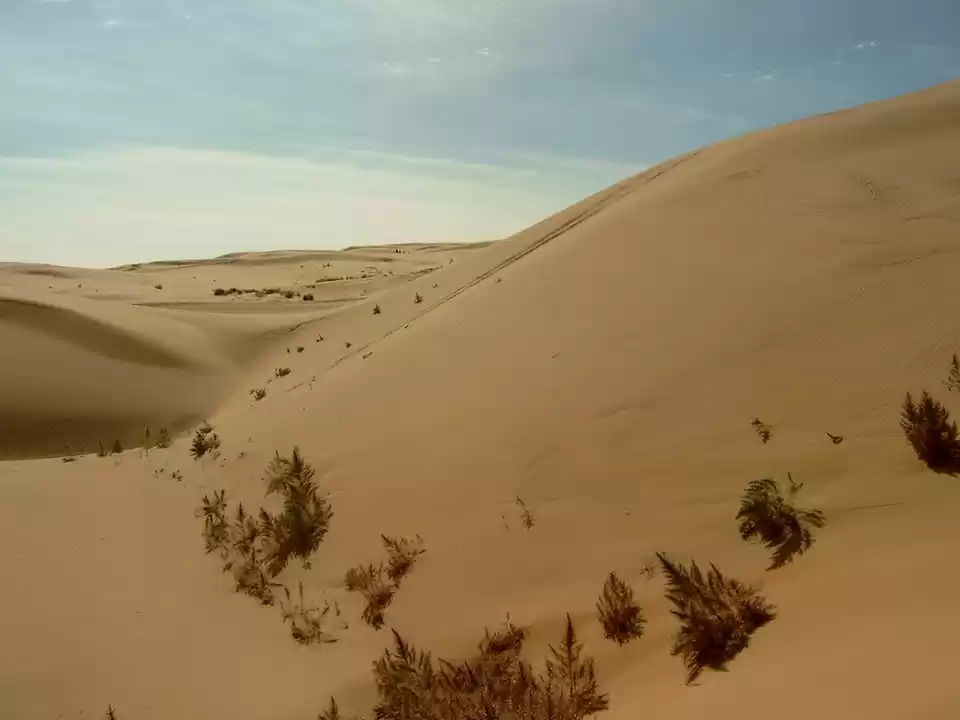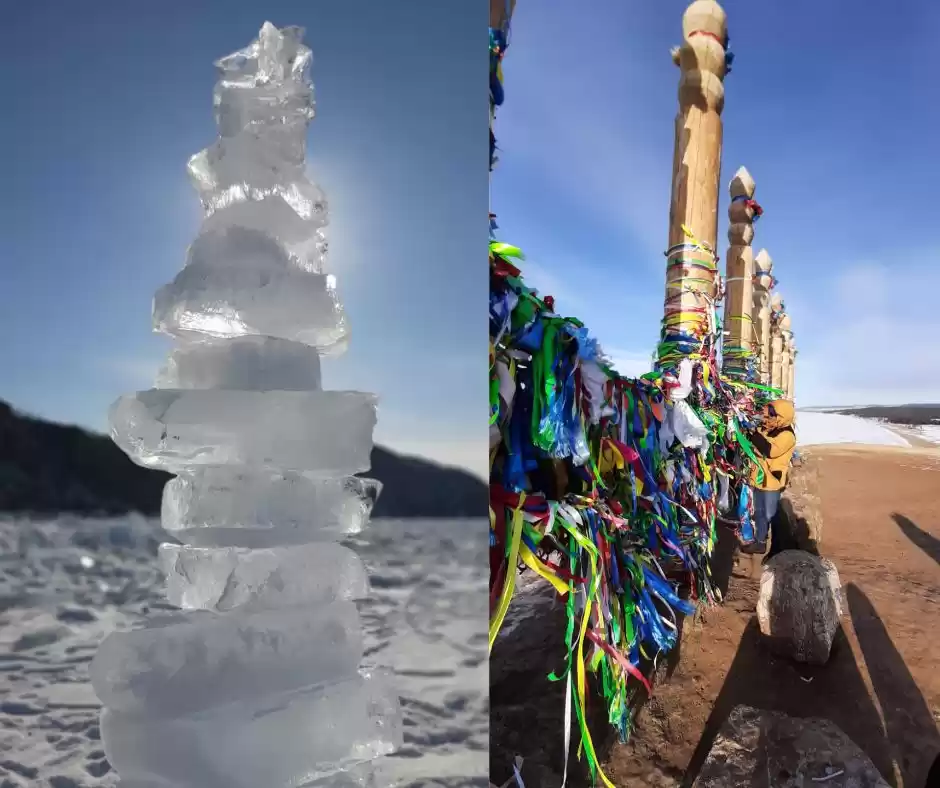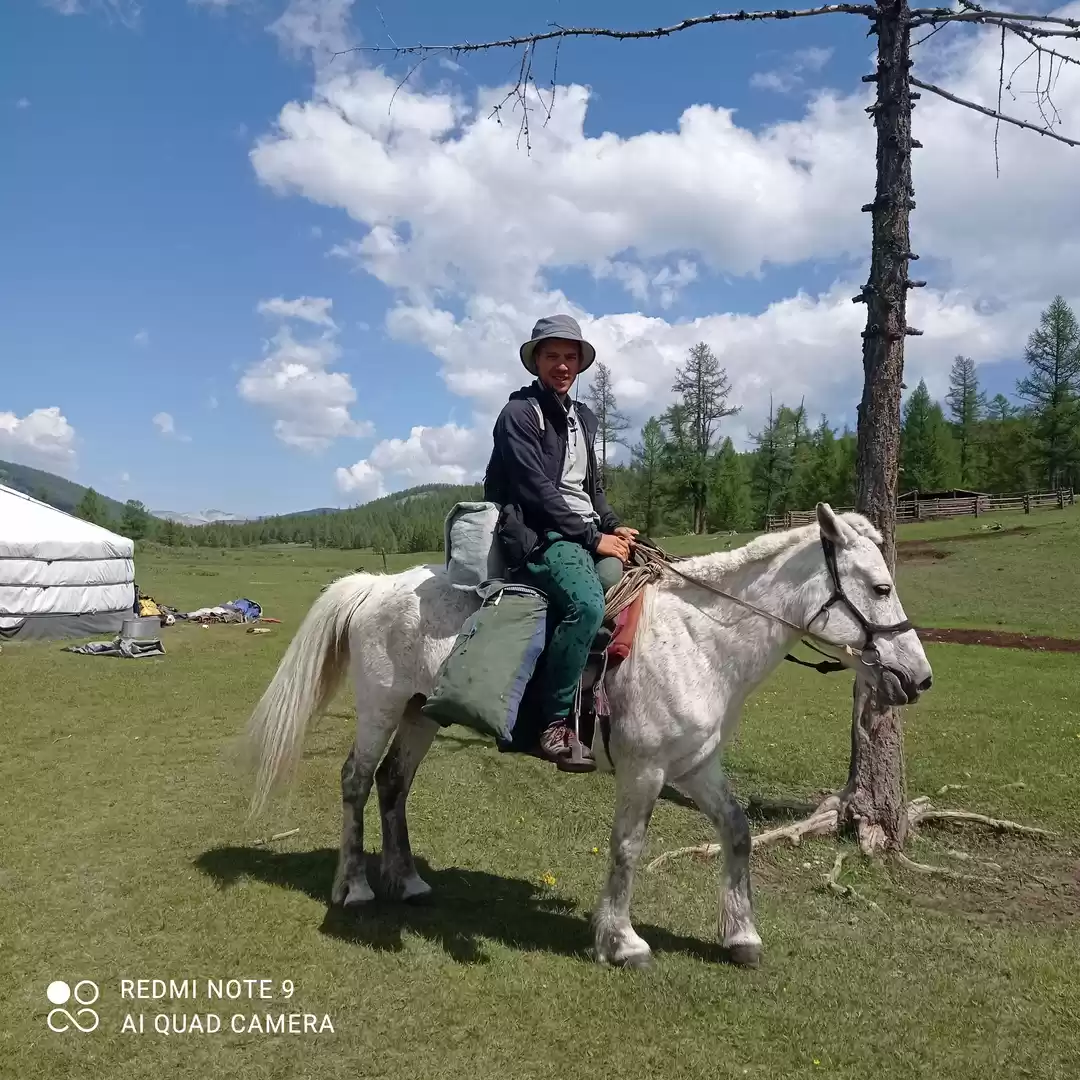
Day 4 - Orkhon Valley
After the Gobi desert, we travel through many hours of dirt roads. After stopping three times due to flat tires, we discovered with surprise the landscapes of Central Mongolia. There are vast green plains as well as big mountains and some rivers. The scenery is beautiful, and as usual, we have a nice itinerary.
We stop to visit the ruins of the Ongi monastery, Saikhan-Ovoo, where we dip in a well of magical water known for its curative benefits. We leave for a horse-riding day in the beautiful Orkhon Valley, accompanied by our guide. It was an extraordinary experience, and we were surprised by the freedom and trust that the guide gave us.
We galloped in the steppes, like real Mongol riders! We eat near a river. In the rocks, we see fantastic Paleolithic engravings, representing horses, and an ibex. On a rock, a yak's head is there. We then travel to the city of Kharkhorin, the former capital of Mongolia. We were able to enjoy a delicious and rare hot shower and a good meal in the restaurant.
The visit of the museum has allowed us to better understand the history of the country and the different empires that have succeeded for more than 2000 years. We also visit the Erdene Zuu Monastery, and we were able to attend a Tibetan monks ceremony, an extraordinary experience for us! It was again after long hours of driving that we reached the hot springs, which were welcome by this cold spring frost.
The temperatures changes from the heat of the Gobi desert! We spend the evening with our guide in the thermal waters while freezing outside. It was another atypical evening that will remain engraved in our memories! We will remember for a long time our improvised evening in a bar supposed to be closed and which ended at 10 in our van!

Day 5 - Terkhiin Tsagaan Nuur
After a good night's sleep in our yurt, this morning, we discover with surprise that it snows abundantly and that everything is white around the yurt. We leave the vehicles in the snow, dragging with the rope the less powerful cars. It was a sacred adventure again and we were amazed by the beautiful landscapes!
We drove past Sangiin Dalai Lake and head to one of Mongolia's jewels Khuvsgul Nuur. It is the second largest lake in Mongolia and the 14th largest freshwater reserve in the world. The temperatures remain relatively low. So we have the chance to discover it completely frozen without any noise disturbing the rest of Mother Nature. And what better way to discover these landscapes than a horseback ride like real Mongolians?
Thus we take the road back towards the Terkhiin Tsagaan Nuur or White Lake. Legend has it that one inhabitant forgot one evening to close his well and the next day the lake had taken place! After being intimidated by bulls approaching a little too close, we take the road again. We stop for lunch in a semi-desert place.
An owl flies over me! She stares at me from the top of a stone. I also find by chance the first Eastern Plovers. Later, while walking in the steppe behind a hill, a horned lark draws me to the surroundings from a cemetery. We are unable to reach Boon Tsagaan Nuur tonight and have to sleep in the steppe on stony ground.
It thunders, and I'm still stuck in my tent. Around me, the cows mow, the storm does not please them! Before the storm broke, on our way, we saw marmots and 5 sacred hawks, Chinese buzzards, blackbirds, citrus wagtails, damsel cranes and barred-headed geese. But what I preferred was the Mongol larks, beautiful, who paraded on stormy sky. It is not easy to photograph them. But the hunger begins to gnaw and takes me out of my lair. The lightning went away.
That night we had the chance to attend a shamanic ceremony, something rare for the tourists we are. The shaman was contacted by our guide. Shamans are very respected and Mongolians often call on them to solve their problems. They had more or less disappeared following the Soviet occupation but today they are more and more common.
In the ceremony, the shaman, a woman in her thirties wear her ceremonial costume and her face is completely covered. She enters into a trance with the spirit of her dead ancestor. Afterward, people send their questions or requests to the shaman for advice or help. Throughout the ceremony, the shaman consumes several liters of yak milk and vodka to maintain the power of the spirit.
More surprising still, the Nazi cross is engraved on many necklaces or rings worn by the shaman. This swastika cross is the symbol of power for the Mongols and was one of the emblems worn by Genghis Khan's horses. This meeting with the shaman was, to say the least, remarkable and allowed us to immerse ourselves a little more in the Mongolian culture.
After this evening quite unusual, we came back to sleep in a small village lost in the middle of the steppes. Here we had the chance to attend a concert of traditional songs. I have a drink that suits me better. The Mongolian milk tea is to say a salty milk, but a treat compared to that horrible yak alcohol. And above all, it is very warm and comforting under the storm!
In the tent, everything is already wet. The rainstorm has all soggy and saturated the atmosphere of moisture. After the polar night of Russia and the endless twilight of the plane, here is the full moon that illuminates the steppe! We sleep in fleece, with pairs of socks, and the cold wind slams the tent. The Mongols made us drink meat soup before going to bed. I fall asleep, exhausted.

Day 6 - Boon Tsagaan Nuur
Last night, after escaping the yak liquor, I could not avoid the vodka flush. The villagers inform our guide that a traditional race of Mongolian horses will take place not far from where we are going.
Our guide tells that we were going to one of the most remote corners of the Gobi Desert, and have no means of communication. When a Mongolian guide tells us that we are going to a remote corner, knowing that most of Mongolia is already, for us, a remote place, it is not super reassuring.
We go to Lake Boon Tsagaan. A little further, two stallions fight for two mares. The landscapes are incredible, Mongolia is a country really different from the others. The more we move towards the Gobi, the more the landscape becomes deserted, with more and more dunes.
The steppe has an odor this season. It smells of a strong and heady fragrance. I dream of a stream, even frozen. It would seem to me a supreme luxury. Finally, after having walked in the region of Trans-Altai, we arrive at Bayanondor, at the doors of the desert, the last village.
A Mongol guides us in the desert of Gobi A, the most difficult. I went alone to a little shepherd's building. In silence and loneliness ideas go through my mind. What if I came across a wolf? What if I found a human skeleton in the old building? In reality, I hope to find an owl or bats, but the building is by no means abandoned!
A family of desert locals stares at me. I am probably the first outsider they see. Finally, we come in sight of Shar Khuls, the oasis in the desert, where we have to camp, and territory of the Gobi bear. It is also a place where the Snow Leopard lives. We have almost no chance to see it, but we hope to find traces.
After that, we eat our rice and the hard meat. Traveling the hard way makes it easy to enjoy simple things. The food, although basic, is welcomed with pleasure. At 11 pm, I have to drink a shot of Chinese vodka! It's the tradition! The first stars rise in the Gobi Desert. The wind has risen and the tent slams more than ever. I finally fell asleep, despite my decision to fight against ticks without mercy.
